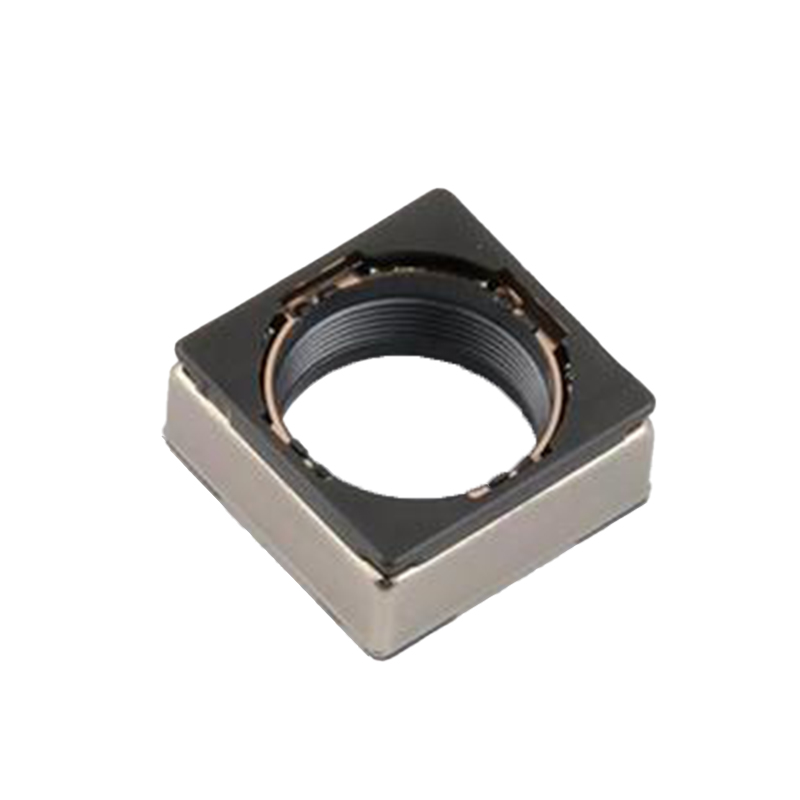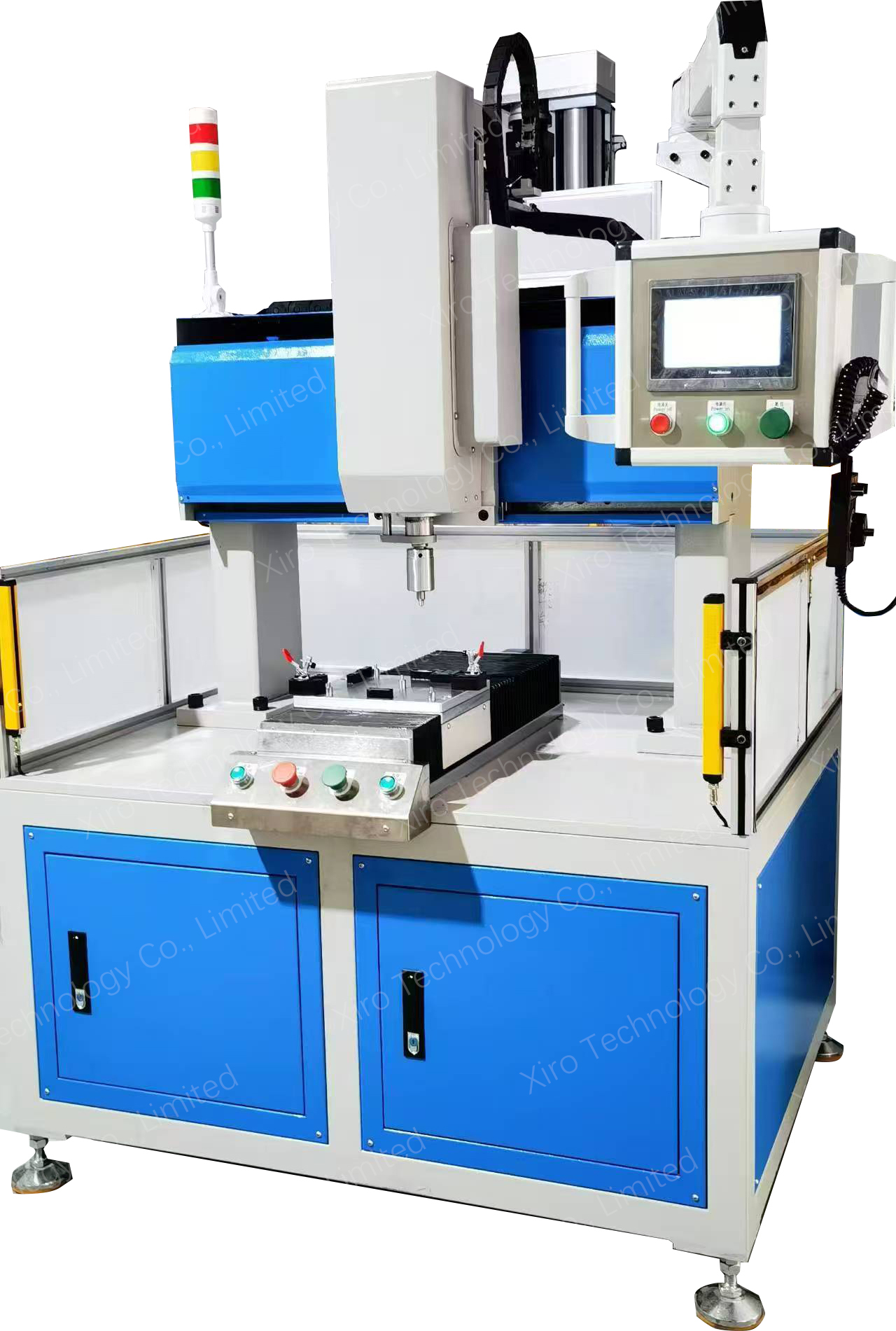I. Industry Pain Points and Technical Challenges
1. VCM (Voice Coil Motor) Bearing Fracture Failures
Case: During the mass production of a flagship smartphone, 18% of the VCM (Voice Coil Motors) exhibited bearing fractures. Disassembly revealed that the peak press-fit force reached 3.45N—230% of the design value of 1.5N.
Causes:
Pneumatic Force Fluctuation: Traditional pneumatic presses exhibit a force fluctuation of ±8%. When press-fitting micro bearings (≤2mm in diameter), a 0.1N force variation can cause localized stress concentration, leading to fractures.
Lack of Tolerance Compensation: The rotor shaft diameter tolerance of ±0.01mm results in a fit interference variation exceeding 15%. However, the system failed to adjust the pressing force in real time.
Monitoring Blind Spots: PLCs with a 500Hz sampling rate miss millisecond-level pressure spikes (lasting<2ms), allowing undetected force surges.

Smartphone Camera Motors
(For confidentiality purposes, the product images shown are representative illustrations only and do not depict actual client-specific product)
2. OIS (Optical Image Stabilization) Spring Weld Failure
Case: A production line for OIS motors experienced a 5.7% cold solder joint rate. Traceability analysis showed that 38% of the welds received less than the critical press-fit force of 0.8N.
Causes:
Delayed Hydraulic Response: Hydraulic systems with >50ms response time cannot maintain required pressure when the spring rebounds, causing ineffective contact force.
Nonlinear Material Behavior: SMA (Shape Memory Alloy) exhibits 0.5% strain per 1°C temperature rise. Traditional PID controllers cannot adapt to the material's nonlinear stiffness change, resulting in control lag.
Data Gaps: Only end-point pressure is recorded, lacking pressure gradient data across the pressing process.
3. AF (Autofocus) Motor Plastic Bracket Deformation
Case: Plastic brackets of an AF motor showed a deformation rate of 12%. Localized pressure exceeded the material's yield strength (15MPa).
Causes:
Kinetic Impact: The pneumatic press did not decelerate at the end of the stroke. Residual kinetic energy converted into an impact load, peaking at 3.2N.
Sensor Bandwidth Limitations: Strain gauge-type force sensors with a 1kHz bandwidth cannot capture high-frequency vibrations around 10kHz.
Flawed Safety Logic: The system only monitored static peak pressure, missing anomalies in pressure rate of change (dF/dt > 100N/s).
4. OIS Stabilization Failure
Case: In a high-end smartphone production line, a 12% defect rate in OIS motors was reported. Displacement error in spring assembly reached ±0.07mm—40% beyond the design tolerance. This led to stabilization compensation errors >0.15°, reducing anti-shake effectiveness by 35% in low-light conditions.
Causes:
Mechanical rail wear led to press head wobble (lateral gap of 0.03mm).
Backlash in the lead screw was not compensated (cumulative error ±0.05mm).
Lateral forces during assembly caused structural deformation (≥0.02mm when force >10N).
5. Multi-Camera Module Focal Plane Misalignment
Case: A triple-camera smartphone failed in depth synthesis. Measurements showed a Z-axis height deviation among the lenses of ±25μm, exceeding the design tolerance of ±10μm, resulting in blurred transitions in depth-of-field zones.
Causes:
Conventional pick-and-place machines only offer ±15μm repeatability.
Lack of thermal compensation: a 5°C ambient fluctuation can cause an 8μm drift.
No real-time coplanarity detection.
6. AF Motor Focusing Delay
Case: Users reported over 30% blur rate when photographing moving subjects. Lab tests showed lens reset time fluctuated by ±12ms (spec requirement: ±3ms).
Causes:
SMA actuator strain prediction error >8% due to PID control's inability to handle nonlinear behavior.
Inadequate displacement sensor resolution (1μm vs required 0.1μm), combined with slow feedback loop, caused system response time >20ms.
Mechanical transmission stiffness was low (150N/mm), contributing to response delays over 20ms.
7. Missing Process Data
Case: A batch defect incident involving AF motor cold solder joints (causing ¥8 million in losses) revealed that missing press-fit depth records led to 38% of joints failing to meet critical contact pressure.
Causes:
Traditional pneumatic presses only record endpoint force, lacking full force-displacement curves. This makes it impossible to detect anomalies like overshoot, underpressure, or lag.
With a ≤500Hz sampling rate, pneumatic presses miss millisecond-level impact loads—such as the 2ms transient spikes during AF motor assembly.
II. XIRO Electric Servo Press Technology advantages
1. Precision in Displacement and Force
Utilizes a servo motor with direct-drive ball screw, paired with a pressure sensor sampling at 2000Hz. Displacement, force, and time are recorded at 1kHz, achieving ±0.5%FS precision.
The closed-loop system dynamically compensates for mechanical backlash (reversal gap<0.001mm), eliminating ±0.05mm deviation risks that could lead to overpressure or underpressure.
XIRO Electric Servo Press (Customizable)
2. Full-Process Traceability System
Three-axis closed-loop control using high-resolution linear encoders (Z-axis pressing + active X/Y-axis compensation).
Position feedback resolution of 0.1μm.
SPC (Statistical Process Control) system performs real-time analysis of force gradients (ΔF/ΔS) and records every press cycle in full detail, enabling process optimization and defect traceability.
3. Impact Load Suppression
Combines servo internal S-curve motion profiles with real-time current loop torque control to absorb residual kinetic energy via system inertia. This reduces impact load by up to 90%.
4. Energy Efficiency and Cost Advantage
Item | Traditional Presses | XIRO |
Energy Consumption | 100% (Baseline) | Up to 80% energy savings |
Maintenance Costs | Requires regular pneumatic/hydraulic system maintenance (e.g., oil changes, air leak checks) | Oil-free, virtually maintenance-free operation |
Production Efficiency | Tooling changeover time >30% of cycle time | Modular design enables tool change in <10 minutes |
Field tests conducted across multiple 3C electronic component module manufacturers have demonstrated that XIRO electric servo press technology reduces the overall defect rate in camera motor assembly by 92%, while cutting energy consumption per unit output by 77%. This makes it a core enabling technology for high-end module production.
Conclusion
The miniaturization and high-precision requirements of smartphone camera modules, particularly VCM, OIS, and AF motors, demand press-fitting solutions that surpass the limitations of traditional pneumatic and hydraulic systems. XIRO’s electric servo press technology addresses these challenges with superior precision, real-time traceability, and adaptive control. By eliminating impact forces, compensating for material non-linearity, and delivering full-process data insight, XIRO offers a robust platform for improving yield, reliability, and performance in high-volume mobile camera module production.
Discover how XIRO Electric servo press technology can help your production line reduce scrap, accelerate changeovers, and improve traceability. Contact us or visit YouTube channel to explore 100+ servo press applications demos across the automotive, aerospace, and precision manufacturing sectors.







